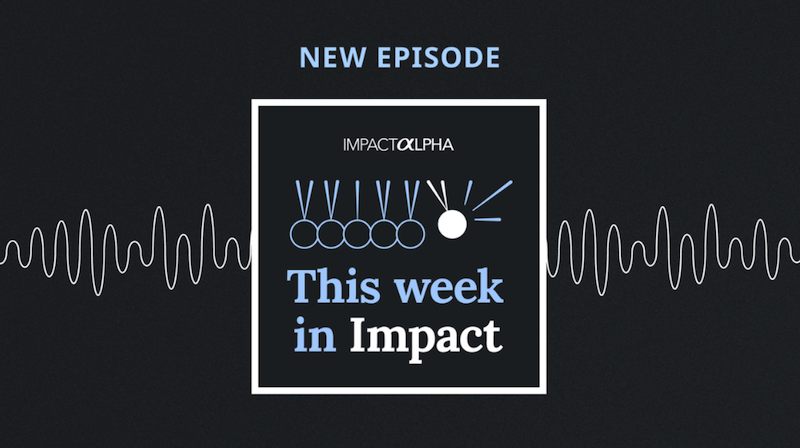The results of a board election last week at the largest public pension fund in the U.S. offered a stark reminder that the “institutional shift” toward sustainable investing is in no way inevitable.
At the $362 billion California Public Employees Retirement System, or CalPERS, incumbent board member Priya Mathur, who had championed so-called ESG (for environmental, social and governance) investing was defeated by a challenger, Jason Perez, who argued that such priorities, “regardless of the investment risk,” had put “retirement security at risk.”
An op-ed in Responsible Investor (well worth reading) called the results “a direct challenge to the current strategy and structure of responsible investment in the U.S., and probably globally, as well.” The author, Jay Youngdahl, painted ESG investing as elitist, out of touch and in thrall to “mainstream financial entities who are reviled by the American electorate at large – including the electorate at CalPERS.”
The latest episode of ImpactAlpha’s Returns on Investment podcast tried to take stock of the state of impact investing at such pension funds and other large institutional investors.
That the owners of such big pools of capital are now actively pursuing “responsible” or “sustainable” investment strategies “ should not be interpreted to mean they just turned into the biggest piggy bank there is. No!” said Equilibrium Capital’s Dave Chen, the podcast’s guide for the ongoing series, “Institutional Shift.”
“They have obligation to a million teachers or a million public employees, who they’re obligated to for 30 or 40 years. That hasn’t stopped,” Chen said. “At the end of the day, they have to preserve the capital and generate a set of returns.”
Institutional Shift: Long-term asset owners move to future-proof their portfolios
Institutional grade
That puts the onus on impact-oriented asset managers to develop strategies that meet the needs of such institutions. That means repeatable, large-scale investments with risk-return profiles that fit institutional portfolios. Equilibrium Capital has attracted pension fund investments for its strategies in agriculture, waste-water treatment and indoor farming.
“That’s the kind of thing you need if you’re asking, ‘How am I going to get trillions of dollars deployed against the Sustainable Development Goals or against climate action?’ Chen said. “It isn’t a series of customized one-off projects. It’s how do I scale and repeat?”
There are success stories. The first half of this year saw nearly $75 billion of “green bonds,” for example, with many issues purchased by institutional investors. The total for 2017 was $155.5 billion.
“Green bonds basically build green infrastructure,” Chen said. In many cases, the bonds are backed by the “full faith and credit” of cities, states and corporations. And “at a billion or a half-billion dollars, they come out in institutional-lump sizes. They can buy a big tranche.”
“It’s no longer a scary thing to finance a billion-dollar wind farm. In the very near term, it won’t be scary thing to finance a billion-dollar offshore wind farm,” he said. “And it’s not scary to aggregate 10,000 rooftop solar installations into institutional-grade instruments. That’s what you need to innovatively construct instruments and marketplaces for institutional capital.”
Institutional investors come for the risk reduction, stay for the impact
Cash flows
The challenge for fund managers, he said, is to convert “problems” into cash flows and assets that can be financed.
“It all starts with, is there a fundamental investment opportunity? Is there a returns model? Is there a positive cash flow, and an opportunity to preserve the principal that is inherent in that problem.”
“There are a million schools, a million wells, a million waste-treatment plants, a million microgrids that are needed,” he said. “Can you integrate a business model that allows for a cash flow, a profit, a return — and maybe navigate that fine line between a fair risk-adjusted return vs. a predatory return?”
Listen to the discussion, and catch up on all of ImpactAlpha’s Returns on Investment podcasts.












